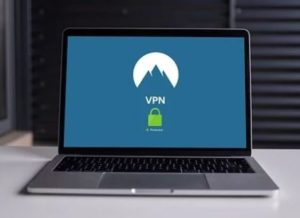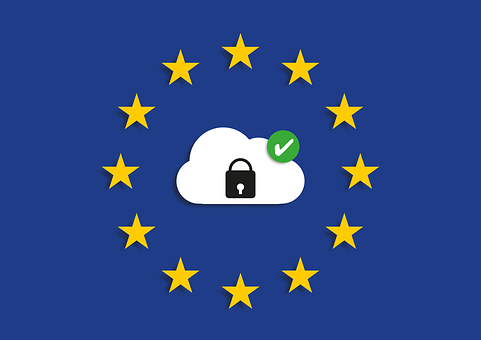How AI Is Quietly Powering Your Everyday AppsHow AI Is Quietly Powering Your Everyday Apps
Every day, we reach for our smartphones and tap into a world of convenience. But have you ever paused to consider what makes your favorite apps so smart? The answer lies in an invisible force that has been quietly reshaping our digital experiences: artificial intelligence (AI). From personalized recommendations on streaming platforms to voice recognition in virtual assistants, AI is woven into the fabric of modern technology. It enhances how we communicate, shop, and even navigate our cities. As it evolves, it’s becoming increasingly integrated into everyday applications—often without us realizing it. Let’s explore how this remarkable technology influences your daily routine and what it means for the future of app development.
The Role of Machine Learning in Powering AI-Driven Apps
Machine learning plays a pivotal role in the development of AI-driven applications, transforming how we interact with technology. By analyzing vast amounts of data, it uncovers patterns that would be impossible for humans to detect. This capability allows apps to make predictions and personalize user experiences. For instance, music streaming services curate playlists tailored to individual tastes based on listening habits.
Moreover, machine learning enhances features like voice recognition and image processing. Virtual assistants can understand context better than ever before, leading to more natural conversations. As developers continue to refine algorithms, the potential grows. Future applications may not only anticipate needs but also learn from feedback continuously. This evolving relationship between users and technology promises an exciting frontier for app innovation.
Advancements in AI Technology and Its Potential for the Future

The landscape of AI technology is evolving at a breakneck pace. From natural language processing to computer vision, advancements are reshaping how we interact with our devices. Imagine an app that understands your preferences without needing explicit input. This level of personalization is becoming increasingly achievable as algorithms improve. As data sets grow larger and more diverse, AI learns faster and becomes more accurate.
Additionally, integration with other technologies like the Internet of Things (IoT) opens up new avenues for innovation. Smart homes equipped with intelligent systems can anticipate needs and streamline daily tasks seamlessly. The potential applications seem limitless—healthcare solutions can analyze patient data in real-time, while educational tools adapt to individual learning styles. With each breakthrough, we’re inching closer to a future where AI enhances not just convenience but also the quality of life itself.
Ethical Concerns Surrounding AI in Apps

As AI technology becomes embedded in our daily apps, ethical concerns start to surface. Privacy is a primary issue. Users often share vast amounts of personal data without fully understanding how it’s used. Transparency is another critical factor. Many algorithms operate as black boxes, making it difficult for users to know what influences their outcomes. This obscurity can lead to mistrust and skepticism. Bias within AI systems poses a significant challenge too. If training data reflects societal biases, the applications may inadvertently perpetuate these inequalities.
Accountability raises questions about who is responsible when an AI-driven app fails or causes harm. Developers must navigate this landscape carefully, balancing innovation with responsibility. There’s the concern of job displacement due to automation driven by intelligent applications. As apps become smarter, we face potential shifts in employment that could impact many industries.…


 One of the fundamental steps in maintaining a secure browsing experience is ensuring that your software, including your operating system, web browser, and antivirus programs, is regularly updated. Software updates often include patches for security vulnerabilities, so staying current with the latest versions helps protect your devices from potential exploits.
One of the fundamental steps in maintaining a secure browsing experience is ensuring that your software, including your operating system, web browser, and antivirus programs, is regularly updated. Software updates often include patches for security vulnerabilities, so staying current with the latest versions helps protect your devices from potential exploits.



 When choosing the right streaming service for live TV, having a user-friendly interface can make all the difference. A cluttered and confusing layout can turn what should be an enjoyable viewing experience into a frustrating one. A good user interface should be easy to navigate and intuitive to use. Important features such as search bars, episode lists, and watchlists are visible and accessible. Users should not spend too much time figuring out how to use these basic functions.
When choosing the right streaming service for live TV, having a user-friendly interface can make all the difference. A cluttered and confusing layout can turn what should be an enjoyable viewing experience into a frustrating one. A good user interface should be easy to navigate and intuitive to use. Important features such as search bars, episode lists, and watchlists are visible and accessible. Users should not spend too much time figuring out how to use these basic functions. Customer support is often overlooked when choosing a streaming service for live TV. However, it’s an important factor to consider in case you ever experience any technical difficulties or have questions regarding your account. A good streaming service should offer multiple ways of contacting its customer support team, such as phone, email, or chat support. It’s also important that they have knowledgeable and friendly representatives who can assist you promptly.
Customer support is often overlooked when choosing a streaming service for live TV. However, it’s an important factor to consider in case you ever experience any technical difficulties or have questions regarding your account. A good streaming service should offer multiple ways of contacting its customer support team, such as phone, email, or chat support. It’s also important that they have knowledgeable and friendly representatives who can assist you promptly.

 Ever heard a catchy tune but couldn’t figure out the song’s name or artist? Shazam (which is now Apple) can help you out. This app (or website) uses sound recognition technology to identify a song playing in your environment. Then it shows you the song name, artist, and even a link to purchase it on iTunes or listen on Spotify.
Ever heard a catchy tune but couldn’t figure out the song’s name or artist? Shazam (which is now Apple) can help you out. This app (or website) uses sound recognition technology to identify a song playing in your environment. Then it shows you the song name, artist, and even a link to purchase it on iTunes or listen on Spotify.
 One of the key advantages of POS systems is that they offer expanded payment capabilities. With a POS system, you can accept credit and debit cards and mobile payments like Apple Pay and Google Pay. This is essential for businesses that want to offer their customers the most convenient way to pay.
One of the key advantages of POS systems is that they offer expanded payment capabilities. With a POS system, you can accept credit and debit cards and mobile payments like Apple Pay and Google Pay. This is essential for businesses that want to offer their customers the most convenient way to pay. One of the best advantages of using a POS system is providing you with detailed receipts. This can be incredibly helpful for tracking your spending and budgeting purposes. With a POS system, you can easily see how much you’ve spent on specific items or over some time. This information can be extremely valuable in helping you to make informed decisions about your spending.
One of the best advantages of using a POS system is providing you with detailed receipts. This can be incredibly helpful for tracking your spending and budgeting purposes. With a POS system, you can easily see how much you’ve spent on specific items or over some time. This information can be extremely valuable in helping you to make informed decisions about your spending. In university, most students struggle with time management. Between the many course deadlines, lessons, and assignments, it is easy to fall behind in their school work. However, hybrid learning offers the learner an opportunity to choose their schedules and manage their time. For example, some lectures pre-record their lessons, allowing students to view them in their own time. It also helps students that have been absent catch up with their classes. With this, students can schedule their classes at a time that is convenient for them. This way, learners can manage all their schoolwork and their time well. A survey showed that 87% of students that used their time well had good grades.
In university, most students struggle with time management. Between the many course deadlines, lessons, and assignments, it is easy to fall behind in their school work. However, hybrid learning offers the learner an opportunity to choose their schedules and manage their time. For example, some lectures pre-record their lessons, allowing students to view them in their own time. It also helps students that have been absent catch up with their classes. With this, students can schedule their classes at a time that is convenient for them. This way, learners can manage all their schoolwork and their time well. A survey showed that 87% of students that used their time well had good grades.


 If you like traveling across the world, you may miss your favorite TV shows and movies. Maybe you are in Europe and want to catch the latest release on Netflix US version. Unfortunately, location-based restrictions can prevent you from watching what you want. Although you can use a browser-based proxy tool, it will result in slow streaming. The best option is to use a VPN and choose the local server. The truth is that most VPNs can securely connect to and route the data through different servers across the world.
If you like traveling across the world, you may miss your favorite TV shows and movies. Maybe you are in Europe and want to catch the latest release on Netflix US version. Unfortunately, location-based restrictions can prevent you from watching what you want. Although you can use a browser-based proxy tool, it will result in slow streaming. The best option is to use a VPN and choose the local server. The truth is that most VPNs can securely connect to and route the data through different servers across the world. Business is always all about maintaining a good relationship with clients. Reciprocation is also another vital aspect to maintain such relationships. One problem is that many of the existing marketing methods do not possess the value of active interaction between the company and the clients. As a result, many clients feel less appreciated, and it leads to sluggish businesses and markets. Mobile apps, on the other hand, are a perfect and effective tool that companies can use to increase the quality of two-way interactions between the company and the clients. As it targets those with gadgets, the clients can easily access the promotional platforms and submit their ideas. The company can also give feedback immediately. When this circle is maintained, it will undoubtedly lead to higher profitability.
Business is always all about maintaining a good relationship with clients. Reciprocation is also another vital aspect to maintain such relationships. One problem is that many of the existing marketing methods do not possess the value of active interaction between the company and the clients. As a result, many clients feel less appreciated, and it leads to sluggish businesses and markets. Mobile apps, on the other hand, are a perfect and effective tool that companies can use to increase the quality of two-way interactions between the company and the clients. As it targets those with gadgets, the clients can easily access the promotional platforms and submit their ideas. The company can also give feedback immediately. When this circle is maintained, it will undoubtedly lead to higher profitability.

 A versatile welding machine will give an artisan much advantage. First, welding is the core of metal-crafting. If you happen to hear this term for the first time, it is a process of heating metals to their melting point so that they can be put together. Once you master this skill, you will be capable enough to make useful things like metal tables, racks, metal bookshelves, trellis, tote trays, etc.
A versatile welding machine will give an artisan much advantage. First, welding is the core of metal-crafting. If you happen to hear this term for the first time, it is a process of heating metals to their melting point so that they can be put together. Once you master this skill, you will be capable enough to make useful things like metal tables, racks, metal bookshelves, trellis, tote trays, etc. You may see many metal artisans use a handheld saw or a cutoff machine. However, the chances are that their skill has been advanced enough to use those tools. Bandsaw is on this article because it the safest compared to the other metal cutting machines.
You may see many metal artisans use a handheld saw or a cutoff machine. However, the chances are that their skill has been advanced enough to use those tools. Bandsaw is on this article because it the safest compared to the other metal cutting machines.
 The functions
The functions Some countries such as China use drones for quick actions in regions hit by earthquakes. In this way, they reach more survivors. The same thing has been happening in Africa where drones are used to reach persons in disaster-struck areas. In the future, they can be used to deliver food and medical supplies in the disaster struck areas. The truth is that drones have a great potential in rescue and search missions. This explains why governments are embrace technology.
Some countries such as China use drones for quick actions in regions hit by earthquakes. In this way, they reach more survivors. The same thing has been happening in Africa where drones are used to reach persons in disaster-struck areas. In the future, they can be used to deliver food and medical supplies in the disaster struck areas. The truth is that drones have a great potential in rescue and search missions. This explains why governments are embrace technology. You may be surprised about this, but the truth is that drones are now used in agriculture. Farms that have many acres of land and farmers spend the time to survey the farms for irrigation or drainage problems, the growth rate of crops, checking soil quality, and diseases affecting the plants. This explains why they are ideal for farmers. You should note that drones can be used to spray crops with the appropriate pesticides or insecticides. Also, they can spray the nutrients on the ground quite quickly.
You may be surprised about this, but the truth is that drones are now used in agriculture. Farms that have many acres of land and farmers spend the time to survey the farms for irrigation or drainage problems, the growth rate of crops, checking soil quality, and diseases affecting the plants. This explains why they are ideal for farmers. You should note that drones can be used to spray crops with the appropriate pesticides or insecticides. Also, they can spray the nutrients on the ground quite quickly. While some of us are still clinging to the amazing effects of bluetooth, the rest of us are moving on with something better. An audio converter can go as far as enabling the transmission of audios from one device to another. You are the one in charge of what and how exactly you would want to have things done.
While some of us are still clinging to the amazing effects of bluetooth, the rest of us are moving on with something better. An audio converter can go as far as enabling the transmission of audios from one device to another. You are the one in charge of what and how exactly you would want to have things done. Over the years, so much has been done just to ensure that quality sound is transmitted to us via our devices. This year, we can’t help but marvel at just how far this software has come. The sound enhancing software is availed to us in different types, and we can’t help but marvel.
Over the years, so much has been done just to ensure that quality sound is transmitted to us via our devices. This year, we can’t help but marvel at just how far this software has come. The sound enhancing software is availed to us in different types, and we can’t help but marvel.

 of the essential tips you are asked to know first is the kind of a vaporizer you are interested in. Due to the recent research that was conducted, it is indicated that most people purchase various vaporizers without knowing the kind of vaporizer they have bought.
of the essential tips you are asked to know first is the kind of a vaporizer you are interested in. Due to the recent research that was conducted, it is indicated that most people purchase various vaporizers without knowing the kind of vaporizer they have bought.

 One of the main reasons why you should consider backing up your website online is because of the safety issues. Once you back up your website online, your safety concerns will be sorted, and you will not worry about hacking and other technological disruptions. The data in your website will be encrypted, and this will reduce the risks and threats to which your information may be exposed to. Even if your drive gets damaged or stolen, you will still get to access the data from the cloud systems.
One of the main reasons why you should consider backing up your website online is because of the safety issues. Once you back up your website online, your safety concerns will be sorted, and you will not worry about hacking and other technological disruptions. The data in your website will be encrypted, and this will reduce the risks and threats to which your information may be exposed to. Even if your drive gets damaged or stolen, you will still get to access the data from the cloud systems.
 One of the significant benefits of digital television is that they are favorable regarding size. This is because they are compact and will need less space within the bandwidth. This aspect will help in creating more piscine for more stations that may be within a particular region. Analog televisions are not compact and so will do not have enough space that can hold many stations.
One of the significant benefits of digital television is that they are favorable regarding size. This is because they are compact and will need less space within the bandwidth. This aspect will help in creating more piscine for more stations that may be within a particular region. Analog televisions are not compact and so will do not have enough space that can hold many stations. Analog televisions didn’t have that clear look on images instead some could have blurred images because of the low definition of the televisions. But with the advancement of the television technology, the digital TV has been made with various specifications which allow for more explicit photos. Similarly, the digital television has more realistic pictures and also high-quality sound.
Analog televisions didn’t have that clear look on images instead some could have blurred images because of the low definition of the televisions. But with the advancement of the television technology, the digital TV has been made with various specifications which allow for more explicit photos. Similarly, the digital television has more realistic pictures and also high-quality sound.